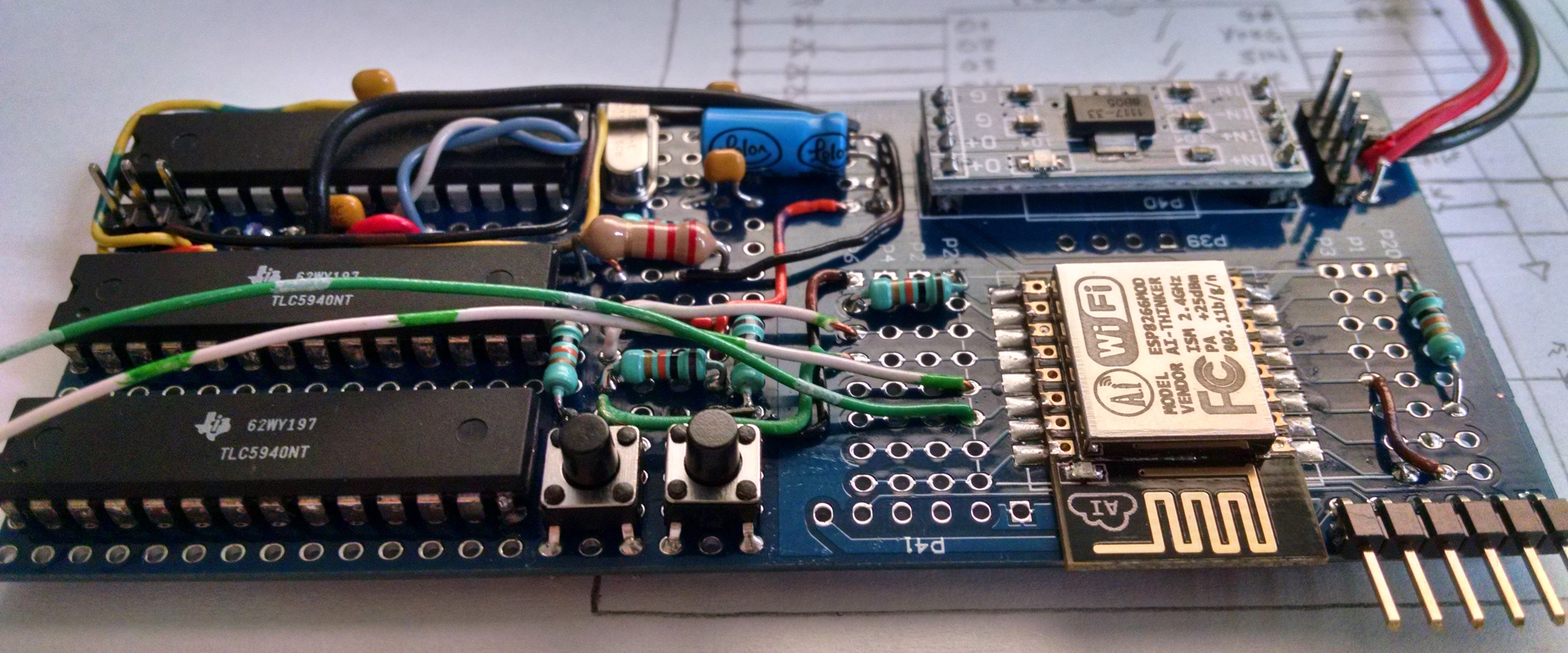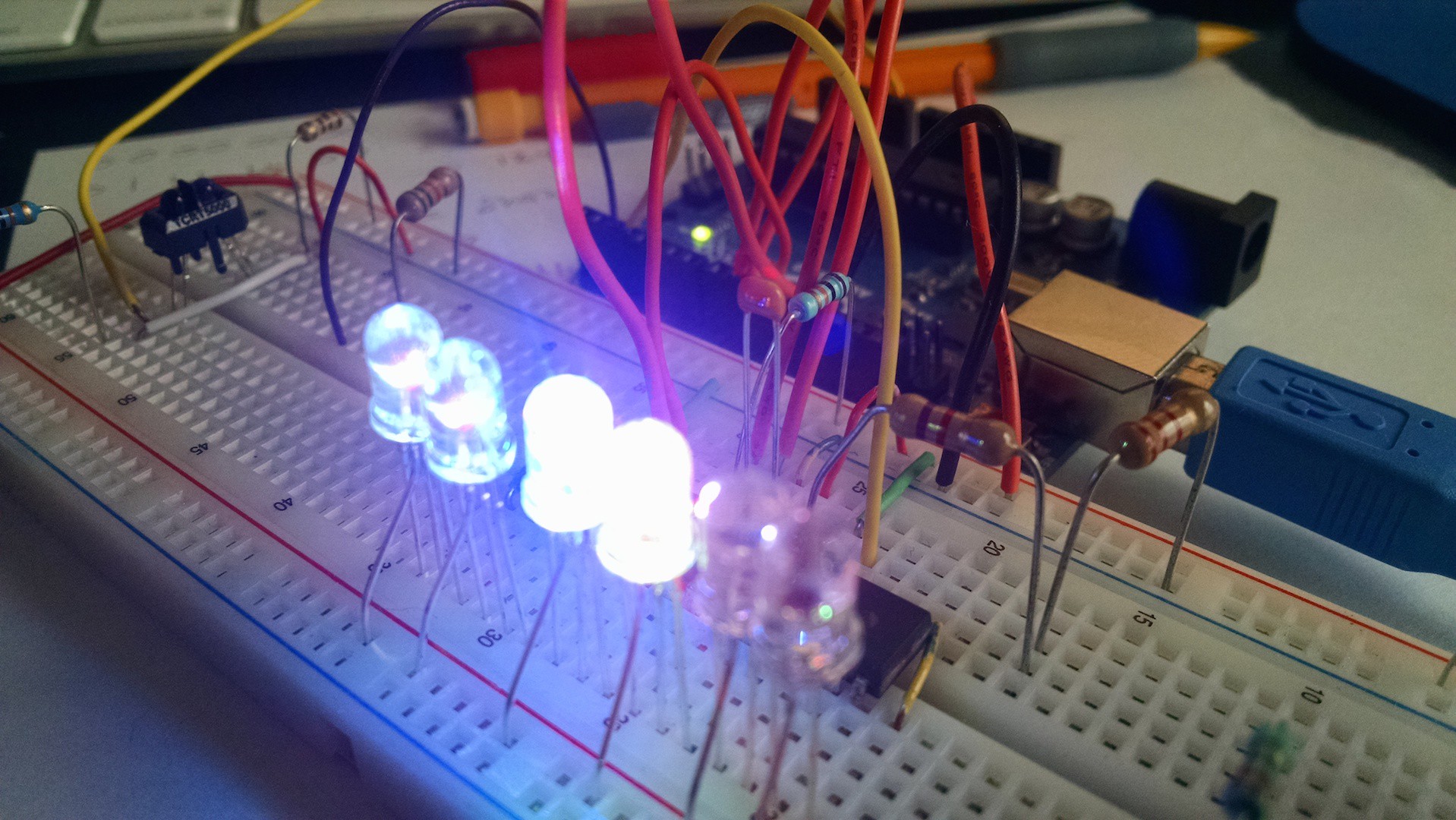After seeing Jason Rolfe's Weather Icon Display featured on HaD, I wanted to try to improve on the aesthetics of the design. My thought was instead of having separate icons to light up for each weather condition, to design a single icon that would light individual segments in proper colours to show current conditions. Current conditions will be pulled from NOAA METAR raw data by an ESP8266. The RGB LEDs for each segment of the icon will be driven by a TLC5940.
Weather Display
A WiFi-enabled wall-mounted lighted display for current weather conditions
 techav
techav




Hi, I was wondering, did you ever finish this project? I am curious about the code and how you did the interaction between the AVR and the ESP.